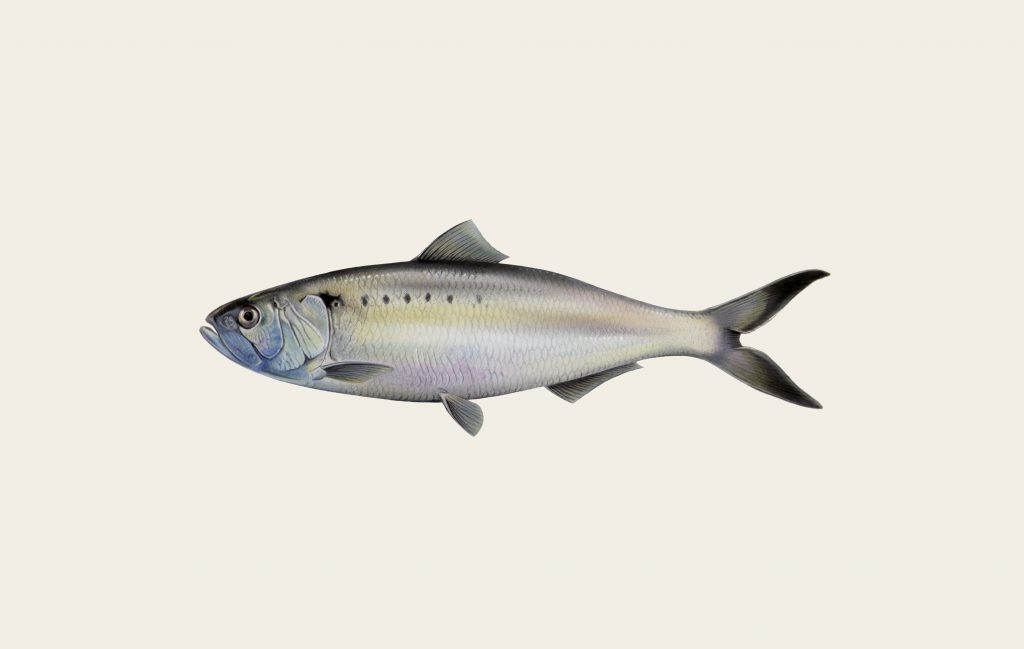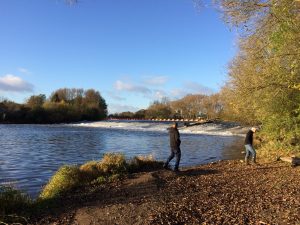Characteristics
Twaite shad are a silver, saltwater fish of the herring family. They have a blueish silvery tinge with between 3 and 10 distinctive dark spots along its flanks, starting darker at the gill casing and fading towards the middle of its back. Adult fish are typically around 30cms long when they migrate up rivers to spawn. Around 35% of shad in the River Severn are recorded to have hybridised at some point in the past with the slightly larger Allis Shad, Alosa alosa. Hybrids are fertile so the genetic mixing persists.
Diet
Shad feed on a variety of invertebrates when they are at sea and they also filter-feed on plankton. Shad stop digesting food once they move into freshwater to spawn, but it’s always been known to anglers that they will take food if the opportunity occurs, maybe through instinctive reactions. They will also take food on the surface for terrestrial invertebrates like mayflies, spiders and other insects that fall onto the surface of the water. This might explain why historically they were easy to catch on fly fishing tackle, although today in the UK they are fully protected and angling is not allowed.




